The Secret Life of Seeds
This week, with the northern hemisphere firmly in Spring and new growth bursting out all around us, we’re talking about the science of seeds. Plus, in the news: the latest on the Astrazeneca COVID vaccine and blood clots, why UK plans to Covid test the population twice a week are flawed, and why beating their chests can save gorillas from fighting.
In this episode
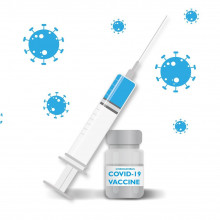
00:59 - COVID AstraZeneca vaccine UK guidance changed
COVID AstraZeneca vaccine UK guidance changed
Michael Head, University of Southampton
In a press conference earlier this week, the UK’s medicine regulator, the MHRA, announced a change in policy around the use of the AstraZeneca Covid-19 vaccine. This “course change”, as deputy chief medical officer Jonathan van Tam dubbed it, is because a small number of people have presented with a rare form of blood clot in the brain - called a cerebral venous sinus thrombosis - together with low blood platelets in the immediate aftermath of their first dose of the AstraZeneca agent. Now it’s not clear whether the vaccine is actually causing this, because the number of cases of the complication is so small and it’s very similar to the number of cerebral venous sinus thrombosis events that we would expect to occur by chance anyway. If we assume there is a link, among older people, the benefits of the vaccine still remain overwhelmingly clear; but because Covid-19 is a mild illness in younger people, the case for them is less compelling, and that’s why the MHRA, and their counterparts in other countries, have decided to act as they have. Chris Smith spoke to Michael Head - an infectious diseases epidemiologist at the University of Southampton who has been following the story…
Michael - So we've had a small policy change, really, in terms of the use of the AstraZeneca vaccine here in the UK. It's now not going to be recommended as a first choice vaccine for people aged under 30 - ideally we'd use one of the other vaccines, so in the UK that's Pfizer and Moderna, instead. That's due to these recent reports of thrombotic events, these rare blood clots, linked to the AstraZeneca vaccine and the most recent investigations suggest that there's probably a causal event there although there's still a lot of uncertainty around that.
Chris - Indeed they do say that, if you're in the age group for which they are recommending a different vaccine going forward, if you've already nevertheless had one dose and you're in that age group, of AstraZeneca's vaccine, you should carry on and have the second, which to me is a strong endorsement actually they think things are pretty safe.
Michael - Absolutely. And I think they have also said that the vast majority, if not all, of these thrombotic events were observed after the first dose. The regulators have expressed confidence in the vaccine itself and I think the fact that we are seeing this open, transparent decision-making around issues of safety shows that it is taken very seriously,
Chris - Can we look at the numbers then, and maybe you could use the numbers to explain why they've made the decision that they have? In other words, they've said, we're going to have one particular course of action for people of a certain age group, but business as usual for everybody else.
Michael - So they were looking at 79 cases of these thrombotic events that occurred after the first dose of the AstraZeneca vaccine. And of these cases 51 were women, 28 were men, aged between 18 and 79. And it appears to be slightly more common in younger ages within that. And the MHRA today said that it's a 4 in 1 million possible adverse event. So it is a rare event, even if they were all linked to the vaccine.
Chris - How does this relate to the background rate at which these sorts of clots occur anyway? Because this is not a new phenomenon that's only just surfaced when we started using AstraZeneca's vaccine. Cerebral venous sinus thrombosis has been happening for many years.
Michael - Yes. It is kind of tricky to work out the background rate because it appears to be quite a hard condition to diagnose accurately. The background risk appears to be around 1 or 2 per 1 hundred thousand people. And I think some of the rates that we've seen in the UK and in Europe have been a little bit elevated above that in terms of the events per number of vaccine doses. So that's partly what generated some of the safety signals that caused these investigations. So the rates appear to be a little bit higher in people that were using the vaccine, but not overwhelmingly so. So there is still that uncertainty as to whether some or all of these reported events have been linked to the vaccine.
Chris - Are we comfortable that the alternative vaccines don't have this risk? Or is it just that people haven't looked hard enough?
Michael - Well, certainly the regulators have been looking and certainly in the UK and across, I think, much of Europe, most of the vaccine doses handed out over the last few weeks have been AstraZeneca as opposed to Pfizer. But it doesn't look like there have been significant numbers of these thrombotic events in Pfizer or Moderna vaccines.

05:50 - Mouldable glass that could replace plastic
Mouldable glass that could replace plastic
Frederik Kotz, University Frieberg
Most of us enjoy snapping pictures using the camera on our phones, and although the quality can be good, it could be better and that’s because the lens of the camera is made out of molded plastic rather than the optically superior glass. This is because, although glass was first made around 5000 years ago, no techniques have existed to mould glass in the same way that can for plastic. This makes manufacturing more costly. Traditionally glass is made out of sand - or silica - particles that are melted together at extremely high temperatures and then blown, ground, or etched into the right shapes. But now Frederik Kotz at the University of Freiburg has developed a technology to make glass mouldable, potentially solving the problem, as he told Eva Higginbotham...
Frederik - At the moment there are a lot of components which are made out of plastics, which we actually want to have made out of glasses. But at the moment, we don't have the possibility to shape these components in glasses at a compatible cost. We developed a novel method which now allows us to shape glass like classical plastic injection moulding.
Eva - What is injection moulding?
Frederik - You basically use a plastic - you melt it and you inject it into a mould. And the nice thing is that this process is extremely fast and can produce a lot of components at once.
Eva - How have you managed to make this new technology?
Frederik - We developed new materials, which we termed Glassomer - it's a mixed word of glass and polymer, which is something like a plastic. And these materials basically consist of a very high amount of glass powder within a plastic binder. You can still shape these materials like a classical plastic. After the shaping process, we put these components into an oven and convert them to real glass.
Eva - So is it like you have essentially a plastic goo that contains bits of sand?
Frederik - Exactly. It's basically like a plastic glue, which holds together this really high amount of sand glass particles.
Eva - The glass that you get out of it at the end, is it the same as just regular glass?
Frederik - Yeah. What you get in the end is a hundred percent class. It's really a pure glass, which you maybe know the glass fibres which we use for a high-speed internet. These types of glasses you can fabricate with this process.
Eva - What's the benefit here? Because we've designed all of these machines and we've designed various different products to use plastic. Why should we ever really want to use more glass?
Frederik - Glass has some very unique properties which are superior in many aspects. Optical transparency, thermal and chemical resistance - these glasses can be heated up to a few hundred degrees and nothing will happen. The mechanical stability is also higher. There's a reason why a car windshield is always made out of glass and not out of plastic because a plastic window would basically scratch over time.
Eva - And what about the environmental consequences of your technique? Is it better than normal glass?
Frederik - It is better. The huge advantage is that we don't melt the glass, we use a process which is called sintering, which is basically working at temperatures way below the melting temperature. So the temperature is really reduced. And we put a lot of effort also in designing this plastic binder that you can regain during this process - a really high amount of this material - and can reuse it multiple times.
Eva - Is this going to be much more expensive than making something out of plastic, like we've already organised the world to be able to do, or more expensive than making regular glass?
Frederik - In terms of making glass it's actually cheaper, especially if you look into more complex glass components. If you have multiple of these so-called etching processes then you need really big clean room facilities, high-tech etching machinery, and this makes the glass extremely expensive. Glass as itself is a super cheap material, it's even cheaper than many plastics which are out there.
Eva - What sorts of applications do you think this new material might have?
Frederik - So we see a lot of applications in different fields from optics, like camera modules, to data communication, coupling elements for glass fibres, to the pharmaceutical sector, vials for vaccines, which need to be stored at low temperatures where you need the thermal stability.
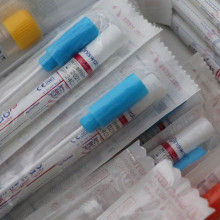
11:35 - Lateral flow tests: issues with mass testing
Lateral flow tests: issues with mass testing
Jon Deeks, University of Birmingham
From the 9th April, people across the UK can ask to receive 2 Covid-19 lateral flow antigen tests every week. This is part of a £100 billion government initiative codenamed “Operation Moonshot”. But is this idea of conducting mass testing on the population to drive down Covid-19 cases and suppress the virus to get us back to normality based on a flawed test and flawed logic because it will miss half of cases? Jon Deeks is a biostatistician at the University of Birmingham, and he spoke to Chris Smith...
Jon - This test is very good at picking people up when they have high levels of virus in their systems. In the study that the manufacturers did, it got 96% of those people. But it doesn't work very well when people have low levels of virus, which is what everybody has when they first get infected, and some people never get above low levels of virus. So it'll miss people, and particularly in those first stages of infection. It'll also miss them if you do a less than successful swab.
Chris - So, in real-world circumstances, if we take a person off the streets and just test them, how good is it picking up a case of coronavirus infection?
Jon - The data we've got from this are all from Liverpool. They tested nearly 6,000 people. 70 of them actually came up positive on a PCR, which they did in the sample at the same time. And of those 70, only 28 were positive on lateral flow test. So that's 40%. So it missed six out of 10. Now we have to be a little careful because the PCR tests stays positive for days - if not weeks - after you've had coronavirus because it can't tell the difference between live virus and dead virus. And so they actually also produced analysis done in those who had the higher level of virus. They actually missed a third in the 39 cases in that sample, which had the high level of virus. I think one troubling thing is that actually these numbers of 70 and 39, this is the basis for our national testing policy; it’s a little bit shocking that we have only got this amount of evidence actually to tell us in the UK as to how well this test works.
Chris - Yes, they're not big, robust statistically large numbers are they! But in terms of what you've just said then, maybe as many as half of cases will be missed when people do lateral flow tests?
Jon - It seems to be about that amount. Whether those cases are infectious is part of the discussion because if they are dead virus, then it doesn't matter we miss them. But the concern is that some of those people will be infectious, they will get a negative result, and they may be falsely reassured by getting that negative result. They may be disinhibited from continuing with all of the social distancing, mask wearing, not cuddling your granny that we've all been told to abide by. Because they've got a negative test result, most people think, well, that means I haven't got it, and take a negative test result as a green light to go and start behaving in ways which they could spread the virus unfortunately.
Chris - So if we look at ways in which - let's take the UK example, the government here are seeking to deploy this test. They're being given to school children so that they will test themselves a couple of times a week. From the 9th of April, people will be able to access these tests so that they can, if they're an adult, test themselves. Is this a valid strategy or has it got flaws?
Jon - Well, there are two missing pieces of evidence straight away. One is we have no evidence as how well people will do this test when they do it on themselves. The other issue is actually we've got no evidence to say how well does it work if we keep on doing this test every Monday and Thursday, for example, the twice a week thing. So it doesn't seem right to me on any level that we're implementing a national policy when we don't actually have the evidence as to how well it's going to work.
Chris - We've considered whether or not the test can find positives in cases where the virus really is there, but what about in cases where the virus isn't there, but the test nevertheless still says positive, it gives a so-called false positive. How often does that happen?
Jon - The data that we've seen on this is showing that it could be 1 in 1000 or it could be even as low as 3 in 10,000 false positives will occur. The problem comes when we actually are using these tests in groups who are very unlikely to have disease because there'll be very few coming up with true positives. And so the ratio of those which are true to those which will be false becomes unfavourable. We saw this happen recently in the schools in the UK where the rates of test positivity was so low it was very clear that it must be that most of these positives are actually going to be false. Now there's a reasonably easy way of mitigating this risk and that is to test people with a PCR test if they've tested positive on the lateral flow test.
Chris - People are also talking about - and the Netherlands have explored the possibility of using testing in this way - for things like festivals or mass gatherings.
Jon - This is where the failure of these tests to detect cases is the big problem. Because if you started testing everybody going into a venue, there'll be some false positives. Not many, but those people will be wrongly turned away. But the bigger risk is actually that we'll miss half the cases as we started discussing. And so the venue will have, rather than having 20 people with COVID in it, it'll have about 10 people with COVID in it. So it's not making a venue safe. It's reducing the risk. It doesn't seem to be reducing it that much, in my opinion, to half the number of cases. However, we need to think that these are the first generation of these tests and lateral flow tests are available for other diseases, which work far better than the ones we've currently got for COVID. So there's hope, but I think we need to be very careful and do very good studies to actually understand whether this is safe or not.
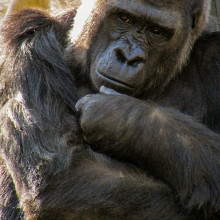
17:30 - Gorillas beating their chests may prevent fighting
Gorillas beating their chests may prevent fighting
Edward Wright, Max Planck Institute for Evolutionary Anthropology
To the animal kingdom now and some interesting insights into why mountain gorillas do that thing they’re most famous for. Katie Haylor reports...
Katie - In the forests of Uganda, Rwanda and the Democratic Republic of Congo mountain gorillas beat their chests. But why? This could all be about saying, "Hey, look how big I am." According to a paper out this week in Nature Scientific Reports, by measuring the size of male mountain gorillas and recording the sounds of their chest beats, scientist Edward Wright and colleagues found ...
Edward - Larger males produce chest beats with lower frequencies than smaller males.
Katie - In other words, the larger gorillas emitted lower sounding chest beat and the smaller gorillas made a higher sounding chest beat. The team first had to measure how big the gorillas were, which can't be easy as for obvious reasons you can't really get that close.
Edward - So we use what we call the parallel laser technique. So we project two small green parallel lasers onto the gorilla, and they're separated by a known distance. And then we take a photograph with these two lasers in the photograph, which is then used as a scale to measure several different body parts of interest. And we also take care not to shine the lasers in their eyes. So we're usually taking photographs from behind the gorilla or from the side, but never from the front.
Katie - Using the parallel laser technique, the team managed to figure out the distance across the shoulders of 25 males. Then it's a question of recording the chest beats - which Edward says the gorillas don't do all that often, and you don't necessarily know when they're going to do it. So they ended up with recordings from six of the 25 gorillas.
Edward - Sometimes you can predict when they're going to do chest beats. Sometimes they hoot before they chest beat.
[gorilla hooting and then chest beating sfx]
Edward - We're not really sure what the function of the hooting is, but perhaps it inflates their lungs with air. And so when a gorilla starts to hoot, okay, maybe in the next few seconds or few minutes they may chest beat. Other times they just chest beat out of the blue. And so it's quite difficult to be at the right time at the right place.
So we put this together in a statistical model, controlling for several other variables like age. And then we found that larger individuals chest beated at lower frequencies than smaller individuals. And this was a robust, significant relationship.
Katie - Curiously, Edward isn't sure exactly why larger males have a lower chest beat.
Edward - It could be the volume of the lungs, hand size, and those two probably correlate with each other anyway. Gorillas also have laryngeal air sacs - big spaces inside the chest cavity. So we think that larger individuals may have larger laryngeal air sacs, which could also be influencing the frequency of the chest beat. But we're not exactly sure if it's a combination of those features or if it's just one.
Katie - Now it's not only males that do this chest beating, but it is more common in male adults than in females or younger ones.
Edward - The main goal I think is to advertise how strong they are. If you're another male and you hear a chest beat and you're able to determine or assess their competitive ability, that's really useful because then you might decide, "He's much bigger than me. I'm not going to pick a fight with him because I'm likely to lose." If you're a female and you hear a big strong male chest beat, "Ooh, that might be a good male for me to mate with." So I think it's definitely involved in male-male competition and female choice.
Katie - But what if you're a smaller male gorilla? Is it dangerous to lay your cards on the table and let others around you know how big or small you are?
Edward - One of the roles of chest beating is to maybe resolve conflicts before you get physical contact and aggression. Physical contact can be extremely fierce. And so it's very risky even for the larger male. The chest beat sort of acts as a, "Okay, you're bigger, I'm smaller. I'm going to let you have this one." But if you're bigger, you're going to say, "No, I'm going to take what I want. Because if we really did come to a fight, I'm very likely to win." So perhaps individuals only really fight when the size difference, so the fighting ability, is quite similar.

22:16 - Mailbox: will taking blood thinners prevent clots caused by the vaccine?
Mailbox: will taking blood thinners prevent clots caused by the vaccine?
Paul’s been in touch with this question “If I take something for blood thinning before taking the covid vaccine, will that reduce my chances of getting a blood clot?” Chris Smith gives us the answer...
Chris - The answer is no, we're not advising people to do that. If people are already taking drugs like aspirin that have a blood thinning effect, you should definitely carry on taking aspirin. But you shouldn't start taking aspirin if you don't already, just on the off chance that you might suffer this side effect. And that's because A) it's an incredibly rare side effect that may not even be linked to the vaccine. We're still trying to prove that. But also the mechanism of action of drugs like aspirin is that they actually block the action of platelets. Well, the reason people have low platelets is because all their platelets have been activating and consumed to make these abnormal blood clots in the head. And if you therefore have a state of low platelets, having something that prevents the platelets you're left with working anymore could mean you're even more vulnerable to bleeding disorders and that could have even more catastrophic effects. So it's much safer not to take drugs that you're not already being advised to take by your doctor. But at the same time, as I've said, if you are already taking aspirin, you certainly shouldn't stop taking that. And remember, this is an incredibly rare side effect of around the order of one in a million, if it is caused by the vaccine at all.
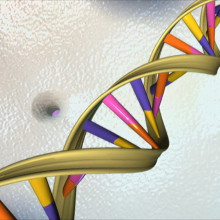
25:08 - Seed banks: storing seeds to preserve diversity
Seed banks: storing seeds to preserve diversity
Noam Chayut, John Innes Centre
An extraordinary feature of seeds is that they can remain viable for long periods of time, which means they can wait until the time’s just right to emerge and grow. This also means that we can store them in facilities called “seed banks” to capture and preserve the genetic diversity that exists in nature. Noam Chayut manages just such a seed collection at the John Innes Centre in Norwich, and spoke with Chris Smith...
Noam - Our seed bank - or gene bank as we prefer to call it usually - is just a very big room, about 600 cubic metres of stable cold environment. It's only four degrees and very dry. So the main thing with preserving longevity of seeds is that dryness, we keep our seeds in envelopes made of paper so the air can flow through them and maintain the humidity very low, below 10% of relative humidity.
Chris - So a person walking through a seed bank would just see rows and rows basically of neat envelopes containing seeds of different species of plants?
Noam - Yes. So some gene banks would hold big freezers because you can also freeze seeds. Ours would just be a very big room of shelves with brown envelopes of seeds in fact, yes.
Chris - And how do you choose the seeds?
Noam - So we have in our custodianship over 45,000 different kinds of diversity of strategic UK crops, that's mainly wheat, barley, oats, peas, and some brassicas. And from each of them, we have many, many, many thousands of different kinds, different cultivars, different wild relatives of them that can be used in plant science and in breeding.
Chris - Have you got a sort of a database on each of the collections of seeds? So you can say, well, this one looks like this, and there's a photo of the plant and what its traits are, perhaps its DNA sequence to go with. Is that how you process them?
Noam - Yeah. So the other side of a gene bank is the databases. And it is just as important as the seeds, of course. Because we need to choose them for a project or for any purpose. So we have a database called Seed Store in our case that contains exactly that information, as you mentioned.
Chris - And the nuts and bolts of actually getting the seed samples into the seed bank in the first place? Is that as laborious as it sounds, someone goes out with that envelope and just shakes a flower head and gets some seeds! And then what do they do with them?
Noam - So, yes many of the seeds sourced in expeditions around the world to collect wild diversity or traditional cultivars, some of our collections are very important because they were collected about a hundred years ago just before the industrial agriculture kicked in to generate more uniformed varieties that are grown today. And the diversity that is kept in this collection enabled a lot of the work that we are doing in the study of plant science and improving crops.
Chris - And how do you know, if you take some of those seeds from a hundred years ago, that A) they're viable and B) that we're not ending up changing them by storing them?
Noam - It's a very good question because evolution never stops. And it continues when we grow them in agriculture. And also when we grow them for gene banking purposes. We do regenerate them or rejuvenate the collection every two or three decades, or when they are depleted in term of stocks. We have ways to prolong their longevity, but we can't stop the deterioration. So in the end, the only way to check if a seed is viable is to put it in soil, water it and get the plant. But we have measures to protect it from gene flow from others. So we try to protect it as unique as it was.
Chris - You mean, so that when it's growing in the greenhouse, for example, there isn't the accidental pollination by a more modern species or another species that could introduce foreign DNA in there.
Noam - Exactly that. So we separate the flowers in some crops. In others we separate the whole plant. Exactly.
Chris - Can you get all of them to grow? Are there any that you end up storing and then you discover they just don't store and they won't grow?
Noam - So the science of conservation is relatively new. It's only half a century and there is not a lot of empiric information. We have a lot of theory that helps us to predict how long a seed would preserve themselves in certain conditions from different species of different kinds of seeds. But in the end, it's our responsibility as custodians of the collection to quality check them every so often, to make sure that they are viable and if not to rejuvenate them and maintain them viable for usage.
Chris - And while it's wonderful to have this, what are you actually going to do with it? What's its broader function in the long term?
Noam - So there is kind of a notion in the public about seed banks that they are there for a kind of a doomsday scenario to restore lost things. And that's a minor part of it. But we are - our bread and butter work - we are part of the chain that brings bread to the supermarkets and other crops to our shelves. We produce diversity, the raw material for plant breeders to improve crops and diversity that underpins plant science. And we do it daily. We send hundreds of samples yearly to end users.
Chris - Later on in the program, we're going to talk to somebody who has actually grown a date from a 2000-year-old preserved date stone. I bet you haven't got a seed as old as that!
Noam - No, no, our seeds are much younger and they date some decades back, as crops can do. But this is a famous and very exciting story in the field, absolutely.

30:14 - Moringa seed coating can kill bacteria, viruses, and fungi
Moringa seed coating can kill bacteria, viruses, and fungi
Manish Kumar, The University of Texas at Austin
Seeds are robust because they have tough outer casings to protect the delicate embryo inside, but they can still fall foul to attack from microbes that can “break in”. These thrive in damp places like the soil, so many seeds have evolved special antimicrobial coatings to repel the threat. So could we take a leaf out of the seed’s book and use these chemicals to purify water? Manish Kumar thinks so, he’s at the University of Texas at Austin, and spoke with Eva Higginbotham...
Manish - So these coatings are essentially seed storage proteins, they call them. And it's very interesting that they're called that, because it helps the seed survive attack from microbes. And the way it does it is by having proteins that can penetrate the membrane of, say, bacteria, but not human cells. So they're safe to eat, but they'll puncture a hole or fuse the membranes of bacteria and kill them. So that's what's in this protective coating in these seeds.
Eva - And is this a coating that the seed itself has made, or is it a coating that its parent made and sort of covered it in?
Manish - That's a good question. I actually don't know. I think the cells that are present in the seed express this protein and then distribute it throughout the tissues to provide this antimicrobial function.
Eva - And does it work on just bacteria? What about viruses and fungi too?
Manish - Yeah, so this was new for us. We were working with a specific seed from the Moringa oleifera tree, and we found that this one protein in the seed was actually attaching to viruses. And then we figured out that this protein had domains that bind to fungi. So they do protect against fungi as well.
Eva - It sounds like sort of a miracle substance that can help protect us from all sorts of things! Is there a way that we could try and exploit that?
Manish - Yeah, so what we do in our lab - or what we've been trying to do - is to use it for water purification. So when you take these proteins and attach them to, say, sand, and you flow water through it, and if your water has lots of microbes, bacteria, and even viruses, now almost all of it gets removed as the water passes through it. And this is very surprising, because we use sand for water filtration in general, in all water treatment plants, and they don't remove any viruses. And this removes billions of viruses per mil. So that's one thing we are working on.
Eva - Have you actually done the experiment where you've taken, for example, some solution that has a known amount of a bacteria that we know causes illness in people, something like cholera; filtered that through with your seed protein; and then used what's come out, the filtered water, in an experiment to quantify how much bacteria was actually removed, and if you managed to remove enough to actually prevent infection in a person?
Manish - Yes. So we have done this with E. coli. If there are billions of cells per mil, you can remove all of it. We can't measure it anymore on the other side. We have removed virus solutions as well - different types, two or three different types. So we've done extensive studies on these, and it seems to be very effective.
Eva - Is it all seeds? Or is it just these Moringa seeds?
Manish - This is a very interesting question. So all the seeds that I've heard of have some antimicrobial properties. Specifically onion seeds, seeds from mustard, rapeseed - these are the ones that we know. These seeds have these cationic or charged antimicrobial peptides, they call them, that have very similar functions, but we have only gotten Moringa proteins to work on attached surfaces. So all of these have anti-microbial properties; people have shown different levels of anti-microbial activity; but when we put them on a surface and try to remove bacteria in a filtration type of setup, for us, only Moringa has worked. And we're trying to figure out why that is.
Eva - So if I had some of these Moringa seeds and I went camping or something, and I had some dirty water from a stream, could I just slap some of these seeds in, leave it for a bit, and then drink it?
Manish - Yes. So what you could do is you crush it with stone, and if you had a piece of cloth, you can dip your cloth in that water, and then you can make a little filter out of it. You pour water on one side - it has to go slowly - and the other side will have clean water. It's shocking! We've done this in the lab, we do it at demonstrations with bacteria that are coloured, and you can see clear water coming out on the other side. So it's very, very effective.
Eva - It sounds amazing, but I'm wondering how scalable this is. Would we need to have big farms and plantations growing all of these seeds? Where do you think in the world would using these seeds to clean water be most beneficial?
Manish - There are two ways we think about this. So in the developing world, there is a problem with purifying water because there are no filters that remove bacteria or viruses. And one of the ways to do this is chlorination, you can add bleach; but bleach is not easy to get in many parts of the world. So in the developing world, this could help as being a filter where you can pour water through and then drink it. So it'll be very effective there. In disaster situations - just like you said, you were going out camping - but say, for example, I'm in Texas, we lost clean water and electricity for five or six days in some places, and we had a boil water notice. Instead of boiling water you could use this, if you had an emergency kit with just some seeds. And the third case is big water plants - can you scale this? You could scale this, and what this will help you with - say, for example, if you retrofit a plant with sand containing these proteins on it, then you don't have to chlorinate the water afterwards to remove most of the microbes. What this does is it produces less disinfection by-products. These disinfection by-products are chemicals such as chloroform. So this could help us at many different levels.
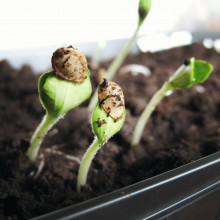
36:52 - Germination: starting the plant life cycle
Germination: starting the plant life cycle
Shelley Lumba, The University of Toronto
Germination is when a seed wakes up and starts to grow, and when this happens is a life and death decision on the part of the plant: start growing in the middle of winter, and the frost could kill you; burst into life when it’s too dry and you’ll never make it either. As a result, seeds are constantly sensing their environments to figure out when it’s time to make their move. Shelley Lumba, from the University of Toronto in Canada, works on how they do this, and spoke with Chris Smith...
Shelley - Yeah, it's a great question Chris. As humans, we don't get to decide when to be born. We're fixed at 40 weeks of gestation, and we have to come out. Plants, on the other hand, have evolved this amazing seed; they're basically freeze dried embryos suspended in gelatin. And that means they can be preserved, or as you said, increase their longevity for a long period of time. And upon sensing the right conditions - like springtime - and their immediate environment, they can make this life and death decision - whether or not to start their life cycle. And the way they do that is they integrate all this information inside the seed, and they form what I think is a 'germination code' to determine - is this really the right time or not? When they start to wake up, the cellular processes start becoming active, and they make the committed step for the embryo or the seedling to come out of the seed coat and start to grow.
Chris - So are they almost like chemical detectors on a seed then, and thermal detectors, that it can use to work out, is it warm enough? Is it warm enough for long enough? Because obviously we have warm days in the middle of winter, don't they, and it would be awful if the seeds shot their bolt too soon. What are they actually doing in order to detect these messages coming in from the environment?
Shelley - Yes, that's right. So they have to take into account long term cues about, for example, seasonality. Plants can sense that winter's occurred, and they do that through the right type of sensors. So they can sense, for example, light through photoreceptors; they can also sense temperature, although that mechanism isn't very well known; and they can figure out through light, proper day length, and temperature, that for example it's spring! It's time to start growing. And within short term cues, they also take into account their immediate environment, such as moisture and nutrients. And again, they have sensors around their seed coat to sense all of those particular environmental cues.
Chris - Because some seeds even 'know' when there's been a forest fire, don't they? Because they know, "now's the time to grow, all of the competition's been blitzed by the fire. If I grow now - lots of sunlight, and I'm going to succeed."
Shelley - That's right. There are these very unusual plant species, and there's definitely an alternative germination behaviour, and they're called 'fire chasing' or 'fire follower' species. And the way they start their life cycle is after a forest fire, and just as you said, because they want to take advantage of this extreme environment and start growing very quickly. And what they use as germination triggers are small molecules called karrikins, and karrikins are actually produced after the forest fire has burnt through the plant matter. So fire-chasing plants can sense the karrikin, and that's what they use to trigger their germination rather than the typical environmental cues that normal plants would generally use.
Chris - Do any seeds eavesdrop on what other seeds are doing? Because we know that plants talk to each other chemically, so they know for instance when their neighbours are being eaten by something, and they send out danger signals and that helps them to weaponise themselves with various repellents and so on. Do the seeds do this at all as well? So if they know, "right, everybody's germinating now, now's a good time to go," and then they follow the crowd?
Shelley - That's right. Unfortunately this is the adverse effect of these small molecules in soil. There's a very devastating parasitic plant which is called witchweed - its formal name is Striga hermonthica - and it's a terrible plant pest in Sub-Saharan Africa. It's a parasite, a plant parasite, that can attack crops like maize, sorghum, millet. And the way that they've evolved their lifestyle, to start their life cycle, is to sense a chemical that's actually being exuded by host crops in the soil. So they eavesdrop, and then that makes them realise that there's a host nearby, and that triggers their germination. And of course that means they start to grow towards the host crop, start to take the nutrients, water, and the assimilates from that host. And obviously that's not good in terms of the yield for the farmer. It's causing huge losses for subsistence farmers in Sub-Saharan Africa, and so it's obviously a huge problem. And the more we understand about the germination of the witchweed, the more we'll be able to develop strategies to decrease their infestations.
Chris - So that parasite physically wires itself into the host crop and steals what it's making?
Shelley - That's correct, Chris. Since they're also a plant, what they can actually do is connect through the vascular tissue to the host crop. And that's how they're able to suck all the water, and the nutrients, and the assimilates that it needs to start growing by itself. It's an obligate parasite, so they actually can't live without a host.
Chris - So can't you just wipe them out by just decimating a field with some really nasty weed killer for a season, and then leave the soil fallow, and then that'll be it?
Shelley - Unfortunately once they've gotten hold of a farmer's field, they've deposited millions of seeds into that field, and they're the size and colour of dust. So once they've actually come out of the soil, it's in some sense way too late because they've already done their damage.
Shelley - And so the way that people have been developing strategies, is to force them to germinate without a host nearby. This strategy is called suicide germination, because we know what compounds they use to trigger their own germination, what we've been working on, and other groups, are to develop compounds that they can sense, that also trigger their germination, but there's no host. So within five days, if they germinate without the host, you're going to die. So that's one of the strategies that we're actually trying to develop to try to mitigate striga infestations.
Chris - And are you using the same learning, not just to deal with witchweed, which sounds like a nightmare, but also with crops we do want to control and optimise germination for? Because presumably if you understand what these triggers are, how seeds integrate these signals and then kickstart the cells in the seed into life, can you take that same learning and use it to control things that we do want to grow, and when they grow?
Shelley - That's a great question, Chris. And that's definitely one of my missions in life. I want to be able to use the knowledge that we know about how seeds decide to make this life and death choice to germinate, and able to positively affect agriculture. And one of the major issues for agriculture is to make sure that the seeds germinate at the same time, and pretty much when you actually want to start your growing season and the knowledge that we use, for example, from the small molecules, I think could have huge applications in making sure that the seeds germinate when we want them to, because obviously they can't germinate too early. That's also bad news and they have to germinate simultaneously so that they all grow uniformly. And it's much easier to grow them and harvest the crop.
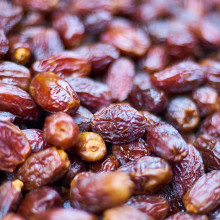
44:20 - Ancient date seed producing fruit
Ancient date seed producing fruit
Sarah Sallon, The Louis Borick Natural Medicine Research Centre at Hadassah Medical Organization
Given the right conditions, some seeds can be stored for years. And, amazingly, in some cases, thousands of years, as Eva Higginbotham heard...
Eva - Back in 2008, we spoke to scientist Sarah Sallon from the Louis Borick Natural Medicine Research Centre at Hadassah Medical Organisation in Israel, about an ancient date seed, found in Israel in the 1960s, and then kept in a university drawer for years, which she and colleagues had managed to get to germinate and grow into a seedling.
Sarah [in 2008] - And then when a little date seedling, which we nicknamed Methuselah was about a year and a half old, she found tiny fragments of the shell still attached to the rootlets, and the results came back about 2000 years.
Eva - That's right. Back then the 2000 year old seed was just getting started. And now, 13 years and several ancient seeds from a few different locations later, there's a whole gang.
Sarah - They are called Methuselah, Adam, Jonah, Boaz, and Uriel. And two females who are called Hannah and Judith.
Eva - And they've grown up too. Little Methuselah is now about seven metres tall and the first female, Hannah, about two and a half metres. But first things first, I asked Sarah, how can trees be male and female.
Sarah - Date palms are a bit like people, but not like people. So if you have a boyfriend and you have children, then those children will be part of your DNA, and part of your spouse's DNA. And date palms are exactly the same. They're female, lady date palms, and male date palms. And if you take pollen from the male, and you sprinkle it on the female flower, then eventually, hopefully you get baby dates, which are the actual dates that the female produces. And those dates are a mixture of mum and dad, that's called sexual reproduction because you need a male and a female, but date palms also produced, what's called asexually, meaning that if you, Eva, grew a little Eva on your side and it was taken off, it would be a clone of you, exactly the same as you, and date palms also make clones of themselves. They're called offshoots.
Eva - And then last year, something very special happened.
Sarah - During the corona, our good news was Hannah produced her first flower, which means that she was ready to have a baby. So my colleague who grew the dates, Elaine Solowey, took some pollen from Methuselah and she pollinated the flower. And lo and behold in September last year, Hannah produced some beautiful dates. So here she just produced a hundred individual dates, really just a kilogram, really, but they were very nice. They were very sweet, but not sticky sweet, sort of dry sweet, and with a very kind of pleasant after-taste. And I don't actually like dates that much, because they're a bit too sweet for me, but I like these very much.
Eva - And now that Hannah is producing dates and so seeds of her own, I asked Sarah, if she's going to plant them to make some baby Hannahs?
Sarah - What they've done over the centuries is, if they find a female who's grown, maybe hundreds of years ago from a seed, but she's a super female, she produces wonderful dates and lots of them. Then what they did is they cloned them by taking the offshoot of that female and planting it, and planting more and more offshoots, because you'll always get the same date, if you do that. You'll get identical females and they'll all be super producers. So for scientific purposes, we've been planting out the seeds just to see what comes up, and genetically what they're like, but to produce a very nice, let's say commercial date from Hannah, then we would take offshoots of Hannah and plant them out. And each of those little trees will be baby Hannahs. That will go to big Hannahs that will produce exactly the same fruit. But the thing is, it takes a long time. So what people do now in the date industry is, they don't take the offshoots and plant out one offshoot. They do something called tissue culture, which means they take a piece of the offshoot when it's pretty fully grown. And in the laboratory, they make hundreds of little seedlings in the laboratory from one offshoot and they're all identical. And that's what we would like to do with Hannah. But I must tell you that this year Hannah has produced right now, six flowers. So what we've done is we've pollinated the different flowers with different males. So there's Methuselah in one, and they're all labelled, And then there's another, that's been pollinated by Jonah and another by Adam. She's kind of got multiple husbands now, and we'll see whether there's any difference in the taste or the size, but generally taste and size is a female characteristic. So it probably won't make that much difference.
Eva - Sarah has been working with collaborators in Montpellier, France, to study the genetics of Methuselah, Adam, Judith and the rest. And they've been comparing the results to the DNA found in the hundreds of modern date varieties, we have today to look for family resemblance,
Sarah - The oldest trees, which are Methuselah and Adam, they're dated to about 300-400 BCE at the earliest. And they most resemble Arabian varieties. Which is very interesting because Arabia was one of the first places to domesticate the date palm, nearly 6,000 years ago. But then the trees that are a little bit younger, like Hannah and Judith, the two females, they're mostly very similar to modern Iraqi varieties. And then we've got the younger guys in the study Uriel and Jonah and Boaz, and they're younger. They date from like the first or second century of the common era. And they are much more like North African date palms. And it really follows a kind of time progression. The younger they are, the more what we call Western they are, meaning they're more North African, which is the Western type date palms. The older they are, they're more like what we call the Eastern date palms, which is everything really, east of Egypt. And Israel is kind of in the middle between these Eastern and Western sections. So our date palms have a mixture of both, but the younger ones are certainly much more Western. And the older ones are very Eastern.
Eva - It's likely that the dry environment the seeds were found in played a significant role in their survival for so many years. And Sarah also hypothesises that perhaps there is something special about this part of the world. Some of the seeds were found in the same cave as the famous Dead Sea Scrolls, where it's very, very low altitude and there is weaker UV radiation. And Sarah thinks that may have helped preserve the DNA in the seeds for long enough that when they were found, they were ready to wake up. She's written a book called The Date's Tale, which tells Methuselah's story through his own eyes from when he was first discovered. And as she told me, he's a bit of a poet.
Sarah - The date awoke that morning to the sound of tapping, not the rustling of winds, sweeping through pillars of salt, not the sighing of a lifeless sea far below. No, this was a tapping of metal against stone, a clanking, dragging, scratching sound. The date reflected. It's a tool, he thought. They are looking for me. They have come to take us home. Brothers and sisters awake! Our days of rest are over. They will plant us and tend us as they did when we were children. But the seeds did not stir, not a thought, not a dream, not a sound disturbed their repose. Fellow seeds, said the date impatiently, they have come, as they promised, why do you not stir yourselves? But the seeds, and the storehouse, and the great palace built by a madman was silent. Only the tap, tap, tap of metal against rock echoed in the morning sun.
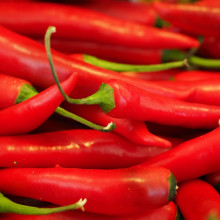
QotW: Why does chilli stay on your fingers?
Adam Murphy had look into Nancy's burning question...
Nancy - Why does chilli stay on your fingers for so long after cooking with them, even after you wash your hands multiple times it can still hurt if you touch your eyes!
Adam - Have you ever been there? You’ve had a spicy dinner and afterwards, despite having washed up, you give your eyes a rub, and suddenly there’s pain everywhere? What’s that about? Well, Tim Woodman from the University of Bath has an answer...
Tim - This is a great question. A simple answer would be that you haven’t washed your hands well enough, but of course it’s a bit more complex than that. The active component in chillies, capsaicin, is a non- polar molecule, which means it’s a lot happier interacting with oils and fats than with water. It’s also extraordinarily potent, with tiny quantities able to produce a significant effect, as you have found when you get some in your eyes.
Adam - As so many of us have found to our detriment. But why is it so hard to get rid of?
Tim - When capsaicin gets onto your hand it finds a conducive environment – the skin is quite hydrophobic (i.e. it repels water, partly due to the presence of natural oils). When you try to remove it by washing, the capsaicin prefers to stay with the oils, even when soap is used. The distribution of capsaicin between the skin and the water greatly favours the skin, so even if you repeat the washing multiple times, some still remains.
Adam - So lots of hot soapy water is called for whenever you’ve been cooking with chilli. Or gloves, as chiralSPO pointed out on the forum. That’s not the end of the chilli story though. There’s another, weirder reason.
Tim - Capsaicin is used as a pain treatment, and is delivered through the skin, from a cream formulation. Here the molecules of capsaicin are helped to pass through the layers of skin by some of the components of the formulation so that the drug can reach its targets. Its not impossible that a similar effect happens with chilli juice – some of the capsaicin not only stays on the surface of the skin, but actually enters the top layer of the skin – the epidermis. Over time this may migrate back to the surface, and hey presto, you touch your eye and find yourself in pain yet again
Adam - Thanks to Tim for answering our burning question. Next week, we’re seeking an answer to this question from Mejnun:
Mejnun - I have learned at school that when an electron excites it jumps to another orbital around the nucleus. If an electron jumps an orbital you would expect that at that moment it can be found between the two orbitals. My teacher told me that this is never the case. I can not wrap my head around it. Does the particle just disappear in one orbital and appear in the other? Is this instant, is the particle in the other orbital the same? Can you please help me to understand this?










Comments
Eva, you have stopped saying
Eva, you have stopped saying "oh" to certain responses from your interviewees. I wish you would go back to doing it.
Add a comment